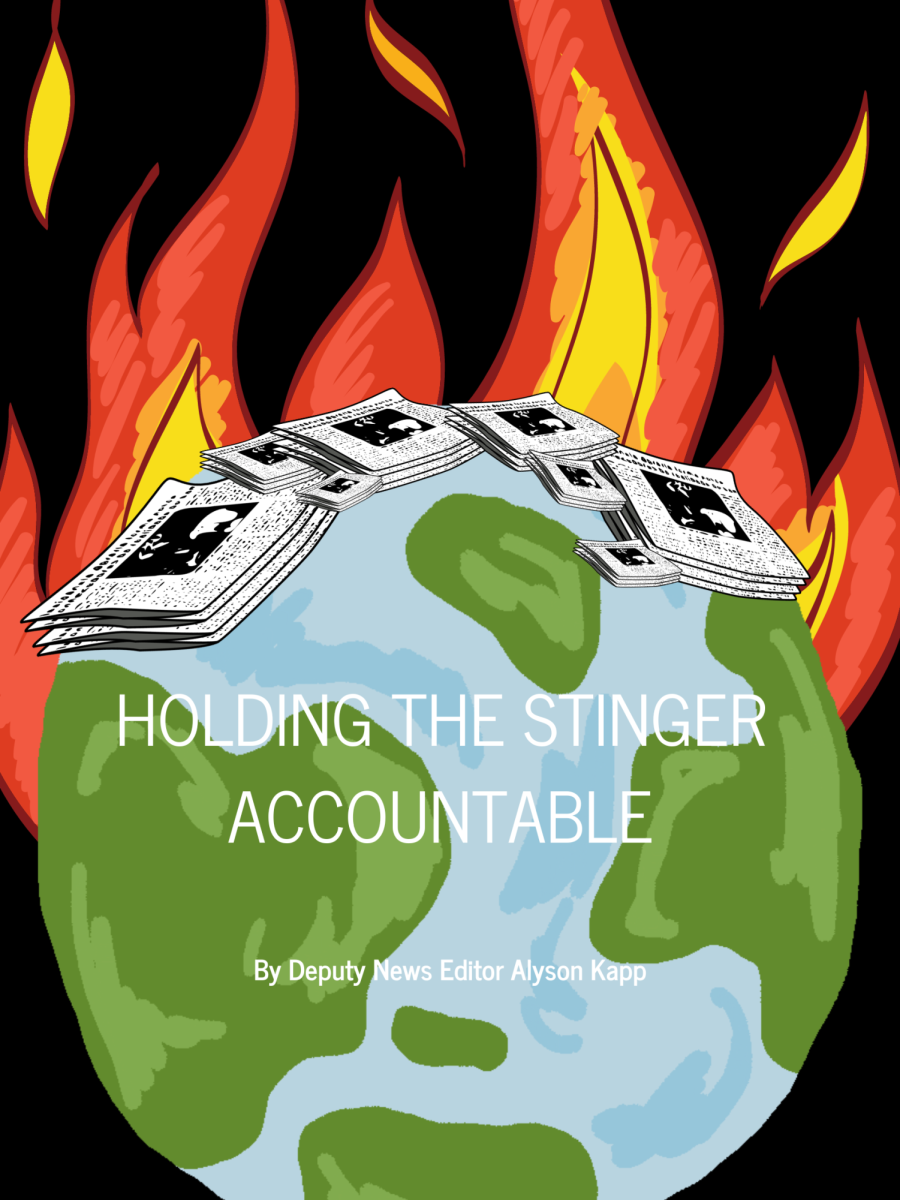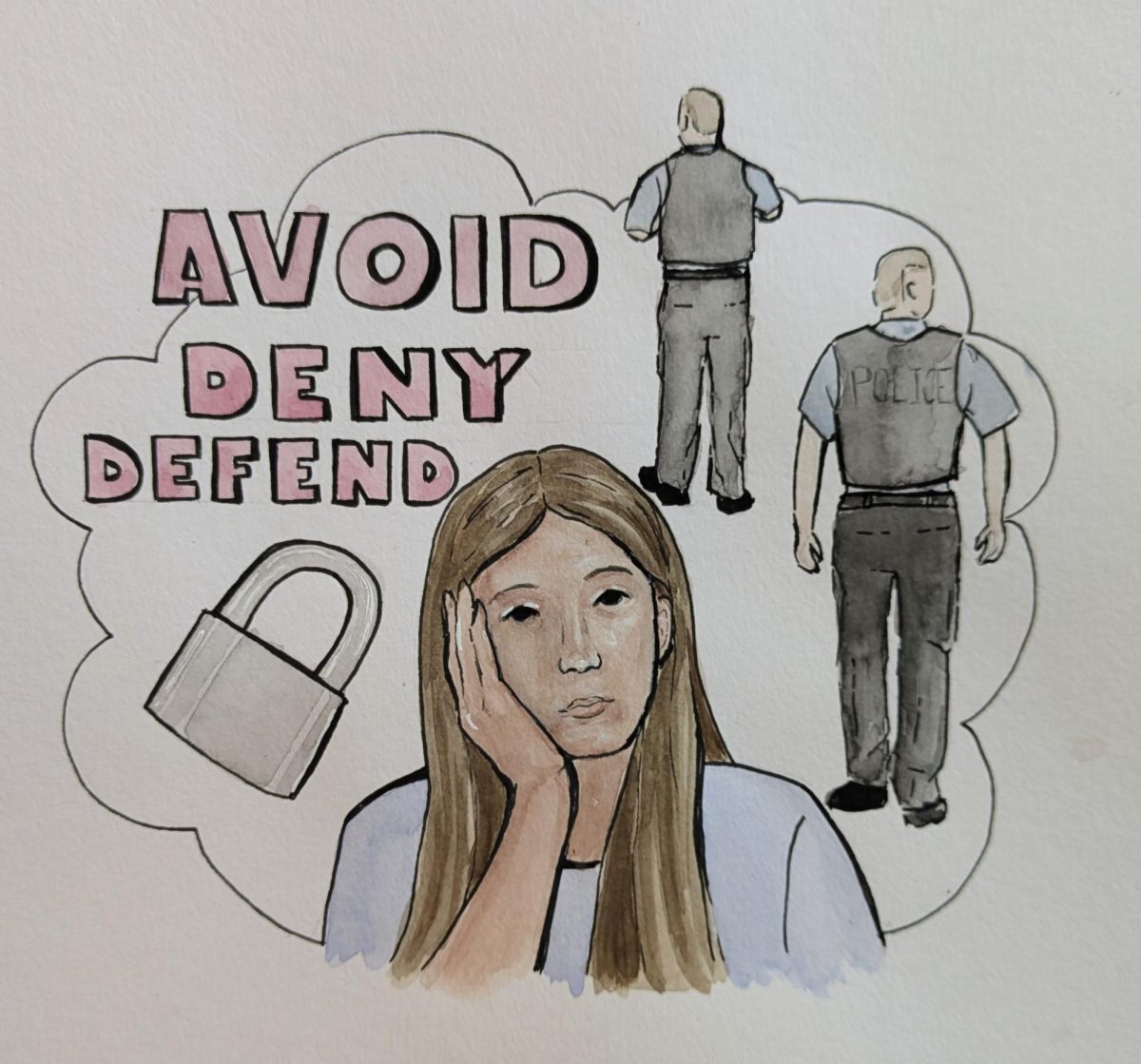This story previously ran in our October 2023 print issue.
Everybody has an ecological footprint — including The Stinger. An ecological footprint is the measure of biologically productive land that a person, or in this case, a print media organization, uses to produce all the resources it needs and dispose of all the waste it creates.
Calculating the exact impact The Stinger has on the environment would be difficult, but what can be more easily gauged is the amount of paper that goes into the annual production of the school newspaper.
Last year, The Stinger printed about 3,550 individual copies. One copy of this year’s September issue of The Stinger weighed 42.5 grams. By those numbers, it is estimated that The Stinger uses 333.6 pounds, or 0.167 tons, of paper for a year’s worth of production. For context, The New York Times prints approximately 113 million issues of their paper in one year, which means they use about 237,615 tons of paper annually. A rough estimate made by 8 Billion Trees, a carbon offset foundation, states that it takes somewhere around 24 trees to produce one ton of paper.
Essentially, The New York Times probably uses roughly 5 million trees for printing in a year, while The Stinger uses less than one.
Trees aren’t the only resource necessary for The Stinger’s production, though. The other largest factor of The Stinger’s ecological footprint is the carbon emissions from its transportation and distribution. Copies of each issue are printed in Wappingers Falls, N.Y., and shipped to us here in Emmaus, Pa. Wappingers Falls is around 151.2 miles away from Emmaus.
The average delivery truck, according to the U.S. Department of Energy, gets 6.5 miles per gallon of gasoline and each gallon of gasoline burned produces 19.5 pounds of carbon; meaning that getting The Stinger from its printing location to Emmaus produces an estimated total of 454 pounds of carbon for each issue.
Throughout the 2022-23 school year, The Stinger printed six issues and contributed 2,724 pounds of carbon to global emissions during shipping.
The Stinger’s contribution to logging and carbon emissions are definitely factors to consider when picking up the next issue, although it is ultimately a minuscule part of national and global emissions. However, that doesn’t necessarily mean the impact is insignificant, so next time you discard a copy of the paper — which you should never do unless absolutely necessary — consider tossing it in the recycling bin instead of the trash can.
For The Stinger staff’s part, we could start planting a tree at the end of each school year as an offset. Regardless, each copy of The Stinger is a little chunk of the earth. We could all stand to remember that from time to time.






